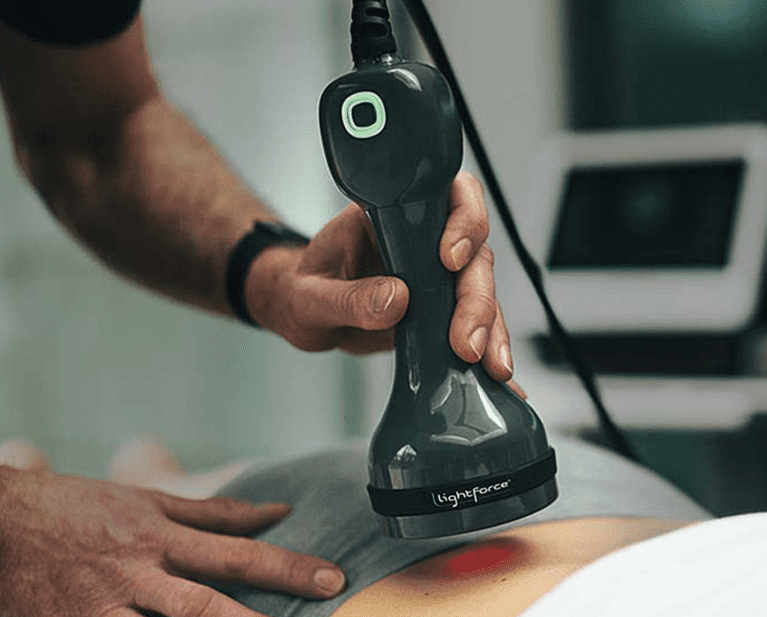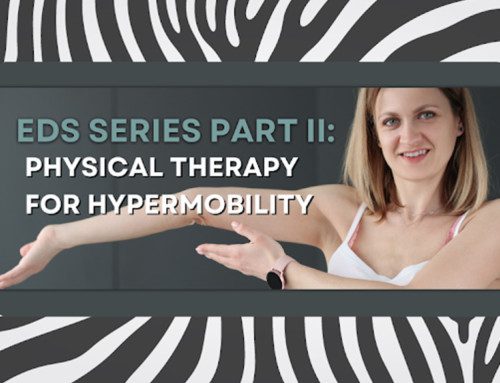Exploring the Healing Power of Class IV Laser Therapy
Innovative technologies continue to reshape the way we approach rehabilitation. One such groundbreaking advancement is Class IV laser therapy, a non-invasive and highly effective modality that holds immense promise for accelerating healing and improving outcomes. Let’s investigate the advantages that this state-of-the-art approach offers in the field of physical therapy. Class IV laser therapy is its non-invasive and painless nature and will improve patient outcomes.
At Set Physical Therapy, we are thrilled to introduce the cutting-edge LightForce Class IV laser to our arsenal of therapeutic tools. This state-of-the-art technology opens new horizons in our commitment to providing top-notch care, allowing us to harness the power of innovation for the benefit of our valued patients.
Benefits
Pain Management: Class IV laser therapy stands out as a powerful ally in pain management by stimulating the release of endorphins and concurrently reducing inflammation.
Accelerated Tissue Repair: The ability of Class IV lasers to stimulate cellular activity translates into faster tissue repair and regeneration. Whether dealing with acute injuries or chronic conditions, patients can experience expedited healing, leading to quicker recovery times and a return to optimal functionality.
Inflammation Reduction: Inflammation is a common hurdle in the rehabilitation process. Class IV laser therapy targets and reduces inflammation in soft tissues, addressing a key impediment to recovery.
Improved Circulation for Enhanced Recovery: Enhanced blood flow is a cornerstone of the healing process, and Class IV laser therapy excels in promoting improved circulation. This, in turn, facilitates better oxygenation and nutrient delivery to injured or compromised tissues, fostering an environment conducive to recovery and rehabilitation.
The Role of the Mitochondria
Class IV laser therapy enhances cellular energy production by stimulating mitochondria, the cell’s powerhouses, leading to improved repair and regeneration. This interaction not only boosts cell function but also contributes to reduced inflammation and efficient healing in physical rehabilitation.
For those of you who want to take a deeper dive into the science, here we go…..
The role of Class IV laser therapy in relation to mitochondria is an intriguing aspect of its mechanism of action. Mitochondria, often referred to as the powerhouse of the cell, play a vital role in energy production through a process called oxidative phosphorylation. Here’s how Class IV laser therapy interacts with mitochondria:
Enhanced ATP Production: Class IV laser therapy stimulates the activity of cytochrome c oxidase, a crucial enzyme in the mitochondrial respiratory chain. This activation leads to an increase in adenosine triphosphate (ATP) production. ATP is the primary energy currency of cells, and higher levels contribute to enhanced cellular function and repair.
Cellular Metabolism Boost: The laser’s interaction with mitochondria influences cellular metabolism. By promoting mitochondrial activity, it facilitates more efficient utilization of oxygen and nutrients, which is essential for cellular repair and regeneration.
Reduction of Reactive Oxygen Species (ROS): Class IV laser therapy has been shown to modulate the generation of reactive oxygen species (ROS) within mitochondria. By reducing oxidative stress, the therapy helps maintain mitochondrial integrity and function, promoting overall cell health.
Anti-Inflammatory Effects: Mitochondria are involved in signaling pathways related to inflammation. Class IV laser therapy’s impact on mitochondrial function has been linked to anti-inflammatory effects, potentially contributing to the management of inflammatory conditions in the treated area.
Cellular Repair and Regeneration: The increased ATP production and optimized mitochondrial function foster an environment conducive to cellular repair and regeneration. This is particularly beneficial in the context of tissue healing and recovery from various musculoskeletal conditions.
While mitochondria are not directly involved in endorphin release, their role in cellular processes, energy production, and overall cellular health indirectly contributes to creating an environment conducive to the positive effects observed in Class IV laser therapy, including the potential release of endorphins.





